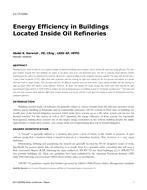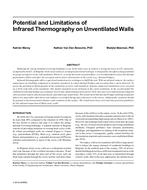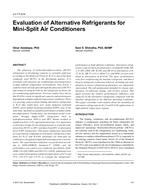Track: Fundamentals and Applications
Sponsor: 4.1 Load Calculation Data and Procedures
Chair: Glenn Friedman, P.E., Fellow ASHRAE, Taylor Engineering, Alameda, CA
Energy codes like Standard 90.1 and technological change have reduced peak loads significantly. This trend continues in RP 1742, Update to Measurements of Office Heat Gain Data, used in the latest ASHRAE Handbook, Fundamentals volume. This significantly impacts design of HVAC and other building systems and can create a new set of pitfalls. Engineers should recognize these trends and the impact they have on old “rules of thumb.” Likewise these trends can have a significant impact on energy modeling and built environment energy use. Tuning existing buildings and systems to take advantage of these trends is a major industry opportunity.
1. Heating and Cooling Load Trends: Down, Down, Down
Steven Bruning, P.E., Fellow ASHRAE, Newcomb & Boyd, Atlanta, GA
As energy codes have evolved over the years since ASHRAE 90-75, their requirements have steadily improved building envelopes and reduced allowable lighting loads. While technology exploded with the advent of personal computers in the early 80’s, plug loads resulting from that technology at first significantly increased cooling loads. More recently that trend has reversed with improved technology, thin clients and cloud technology. What impact have these trends had on HVAC design, the old one cfm/sf rule of thumb is literally out the window.
2. Decreasing Internal Loads: Could This Lead to Problems?
Christopher K. Wilkins, P.E., Member, CBR USA, Cambridge, MA
This presentation reviews the downward trend for internal loads over time, with an emphasis on lighting loads and plug loads. The presentation also discusses the most recent research by TC 4.1 on low energy lighting (LED) and plug load measurements. The presentation also introduces the question of determining the point where lower loads can present system or indoor air quality issues.
3. Low Loads: Reap the Benefits but Read the Fine Print
Manalee Nabar, P.E., Associate Member, Bright Power Inc., New York, NY
Low loads, both overall and internal plug/lighting are pivotal factors when achieving energy efficient (Passive House, Net Zero, etc.) building design. This presentation first delves into the basic components of heating and cooling loads and examines how different load calculation methods handle the interdependency and time lag between them. Next, strategies to minimize internal loads is discussed. Lastly, common pitfalls in HVAC system sizing due to low loads is discussed and what factors should be kept in mind when specifying equipment.
Presented: Tuesday, January 23, 2018, 3:15 PM – 4:45 PM
Run Time: 90 min.
This is a zip file that consists of PowerPoint slides synchronized with the audio-recording of the speaker (recorded presentation), PDF files of the slides, and audio only (mp3) for each presentation.
Citation: ASHRAE Seminar Recordings, 2018 Winter Conference, Chicago, IL
Product Details
- Published:
- 2018
- Units of Measure:
- Dual
- File Size:
- 1 file , 89 MB
- Product Code(s):
- D-CH18Sem50


